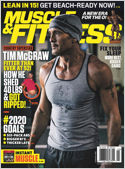Creating a weight lifting routine can sometimes be a very difficult and time consuming task. It is almost impossible to isolate and train a single muscle group by itself and therefore some consideration must be directed toward organizing 3 or 4 day a week workout programs that allow optimal muscle recovery time (5 days a week or more is often excessive). Compound free weight exercises are the bread and butter of any effective routine and are required for proper development of the larger muscle groups such as quads, back, and chest. But also keep in mind that compound movements recruit both the primary muscle group trained as well as additional groups for assistance and/or stabilization. These secondary muscles can easily become exhausted if trained again without sufficient rest. For example, squats are primarily a quad exercise but also involve the calves, hamstrings, lower back and glutes to assist in executing the movement as well as the upper back, traps, and abs to stabilize the entire body while supporting a heavy barbell. Therefore the hamstrings and lower back must be fully recovered after a quad session before a dedicated workout to avoid the possibility of over training either. It is obvious that basic knowledge of human anatomy is essential for constructing an effective weight lifting routine.
Lower Body
Quads should either be trained with only one or two small muscle groups or on a separate day altogether. This is because squats intensely work almost the entire body, resulting in
muscles that
get tired fast when combined with additional quad
movements such as leg presses and hack squats. An important rule of thumb to keep in mind is the hamstrings and lower back must be recovered (not sore or over trained) prior to training quads.
Lower back can either be paired with upper back and/or hamstrings. This is because the most effective exercise for lower back development is the
deadlift, a movement that highly involves both. D
eadlifts are almost as intense as squats (most of the same muscle groups are used) and will cause muscles to get tired fast when combined with heavy upper back movements such as bent-over rows or weighted pull-ups. Hence, the lower back is most effectively trained when both the hamstrings and upper back are sufficiently recovered.
Calves and abs recover fast enough and can usually be trained at the end of any workout (upper or lower body). It is important to keep in mind that both muscle groups can be over trained and should not be trained more than twice a week.
Upper Body
The upper body is composed of two major muscle group categories: pushing and pulling both horizontally and vertically in relation to the body. Pushing muscles are used to perform exercises that move the weight away from the body and include chest, shoulders, and triceps. Pulling muscles are used to perform exercises that move the weight toward the body and include upper back and biceps. Horizontal movements develop torso thickness while vertical movements develop torso width. There are a wide variety of upper body weight lifting routines available and some trial and error may be required to find the right one.
Chest is the primary horizontal pushing muscle group and is best developed with bench press movements. Because the shoulders and triceps are highly involved in the bench press it makes sense for both to be recovered prior to training chest. Shoulders are the primary vertical pushing muscles and are best developed with overhead pressing movements. The triceps must be recovered for overhead presses but the chest is not involved much at all and therefore its recovery level is irrelevant when training shoulders. The upper back is the primary muscle group for both horizontal and vertical pulling movements. Rowing movements develop thickness in this area while pullups and pulldowns develop width. Almost all upper back exercises highly involve the biceps and many rowing exercises require lower back strength for stability and therfore both muscle groups should be recovered beforehand.
When creating a weight lifting routine, pushing and pulling as well as upper and lower body muscle groups can be trained together in the same workout. Forearms and neck are much like calves and abs in the sense that they can be trained at the end of any workout but can also be over trained if worked more than twice a week. These 2 areas are often neglected because they get a lot of work from heavy gripping exercises used for both upper and lower body development.

